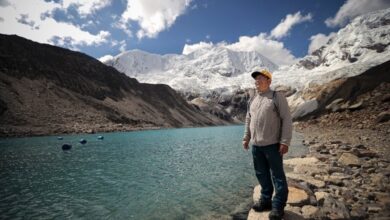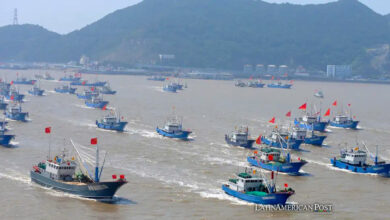Water Scarcity in Latin America’s Megacities is a Growing Crisis

Mexico City’s battle against water scarcity underscores a dire environmental challenge Latin American megacities face. Residents’ prolonged struggles reveal the harsh realities of life without water, urging immediate action towards sustainable management and equitable access to this essential resource.
Beneath the Surface: Water Scarcity in Mexico City
In the sprawling urban landscape of Mexico City, one of the most densely populated cities on the planet, a crisis lurks beneath the surface that resonates across Latin America: water scarcity. The situation in the Pedregal de Santo Domingo neighborhood, where residents have protested for over 15 years against the lack of water, paints a grim picture of the challenges countless communities face. “Imagine how our children live without water; it’s not imaginary, it’s a nightmare,” echoes through the streets, a poignant reminder of the struggle for a basic human need.
This crisis is not unique to Mexico City but is mirrored in various forms throughout Latin American megacities, each grappling with the consequences of urbanization, environmental mismanagement, and climate change. From the arid landscapes of São Paulo, Brazil, to the water rationing measures in Lima, Peru, the region’s urban centers are on the frontline of a battle for water security.
Desperation in the Southern Reaches
In Mexico City, the tale of Pedregal de Santo Domingo’s fight for water is a testament to community resilience and the stark inequality of water access. With a population of 100,000 in the southern reaches of the capital, residents have endured escalating water scarcity, evolving from hours to days, weeks, and even months without a drop from their taps. Their desperation reached a tipping point nine years ago, leading to protests that eventually secured a community nicely, operational since December 2022. Yet, this victory is a drop in the bucket against the backdrop of a city—and a region—at the brink of a water crisis.
The Cutzamala system, which supplies water to Mexico City and surrounding State of Mexico municipalities, operates at below 40% capacity. Experts warn of a looming ‘Day Zero,’ predicting a catastrophic halt to water supply as early as July. This scenario echoes Cape Town’s 2018 crisis, underscoring a global urgency for sustainable water management.
Latin America’s water woes are compounded by inadequate infrastructure, overexploitation by large corporations, and a climate emergency drying up reservoirs. Activists and organizations have long sounded the alarm on these issues, advocating for a shift towards a water conservation and recycling culture, as residents like María del Carmen Pelayo emphasized. Their message is clear: water is life, and its scarcity demands action from affected communities and society at large.
The construction of apartment towers in nearby Los Reyes, which inadvertently tapped into a shallow aquifer, further highlights the tension between development and sustainability. Despite the potential to harness millions of liters of potable water, the project drained the aquifer directly into the sewage system, continuing unabated despite protests. This incident reveals a more profound systemic disregard for water conservation and the vital importance of aquifers, particularly in a region characterized by a volcanic stone that naturally filters and replenishes deepwater reserves.
The struggle in Pedregal de Santo Domingo and similar tales across Latin America underscore a critical need for comprehensive water management strategies that prioritize sustainability, equity, and community involvement. Megacities across the region must confront the reality of their water scarcity crises, leveraging technology, policy, and public awareness to forge a path toward water security.
The journey towards resolving Latin America’s water scarcity crisis is fraught with challenges but also opportunities for innovation and collaboration. Initiatives like community wells, rainwater harvesting, and sustainable urban planning can be models for other cities facing similar predicaments. Moreover, fostering a culture of water conservation, from individual actions to corporate responsibility, is essential in mitigating the impacts of this crisis.
Innovation and Collaboration: Opportunities Amidst Challenges
In confronting water scarcity, Latin America’s megacities are fighting for the survival of their current populations and for the future of urban living in a rapidly changing climate. The story of Mexico City’s water struggle is a call to action, urging cities across the region to rethink their relationship with water. It’s a reminder that the fight for water security is not just about infrastructure and policy but about ensuring the fundamental human right to water for all residents, now and future generations.
Also read: Drought’s Grip on Mexico: A Looming Threat to Agriculture and Inflation Across Latin America
As Latin American cities navigate the complexities of urbanization and environmental degradation, the lessons learned from places like Pedregal de Santo Domingo illuminate the way forward. The region can turn the tide on water scarcity by embracing sustainable practices, investing in resilient infrastructure, and fostering community empowerment. The path ahead is challenging, yet through collective effort and a commitment to change, Latin America’s megacities can secure a future where water scarcity is no longer a nightmare but a challenge overcome.





